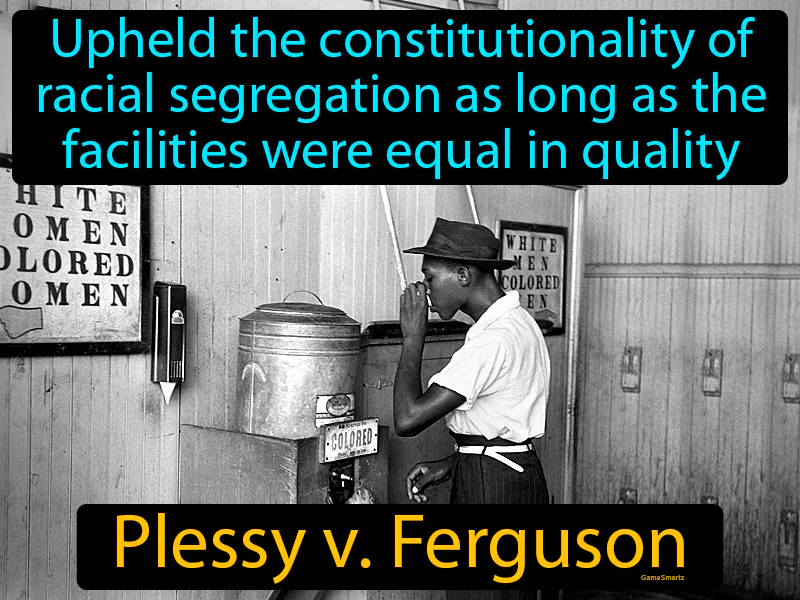Plessy V Ferguson
Plessy V Ferguson: Easy to understand
Plessy v. Ferguson was a landmark Supreme Court decision in 1896 that legally endorsed racial segregation under the "separate but equal" doctrine. During the Gilded Age, this ruling highlighted deep racial tensions and inequalities, as it allowed states to maintain segregated facilities that were rarely, if ever, truly equal. This decision reinforced systemic racism and discrimination, impacting African Americans' access to quality education, transportation, and public services, shaping society for decades. Today, its legacy is felt in ongoing discussions about racial equality and justice, as communities work to dismantle the remnants of institutional segregation. An average person might encounter its impact when discussing or experiencing issues related to racial integration in schools or neighborhoods, reminding us of the importance of striving for true equality.

Practice Version

Plessy V Ferguson: Upheld the constitutionality of racial segregation as long as the facilities were equal in quality. Plessy v Ferguson. Plessy v. Ferguson was a U.S. Supreme Court case in 1896 that allowed racial segregation under the "separate but equal" doctrine.